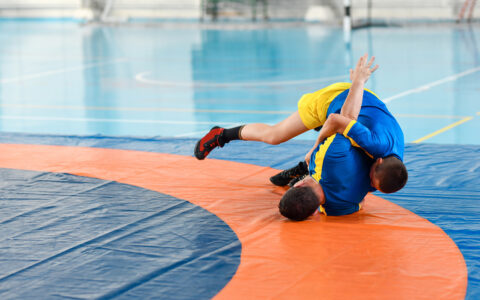For the parents of children with autism and other neurodevelopmental disorders, stressful days often bleed into exhausting nights. Efforts to help neurodiverse children sleep are often complicated by their limited or absent verbal abilities.
Children’s sleep problems often diminish not only their own daytime functioning, but also how well their parents and siblings perform at school, at work and in social settings, explained Beth Ann Malow, M.D., Burry Chair in Cognitive Childhood Development and director of the Sleep Disorders Division at Vanderbilt University Medical Center.
“We actually have really good ways to get these kids to sleep,” Malow said. “But supporting parents and caregivers in implementing some of the behaviors can be a challenge.”
“If you can’t get a family to connect with you, you are going to fail.”
Finding reliable ways to engage caregivers in using proven behavioral interventions to help youngsters with atypical neurology sleep is an area garnering a lot of attention currently, Malow explained. “We have to figure out what is important to families and how they prefer to take in new ideas about handling their children,” she said.
Personalizing Education and Assistance
Some parents do well with online reading materials and modules; others need support from a therapist or coach, she adds.
“We actually have really good ways to get these kids to sleep. But supporting parents and caregivers in implementing some of the behaviors can be a challenge.”
“These days, Vanderbilt strongly emphasizes personalized medicine, targeted towards the individual child and the family,” said Althea Shelton, M.D., an associate professor of neurology at Vanderbilt. “This approach applies to addressing the sleep problems of children with autism or other neurodevelopmental conditions.”
Malow said clinicians try to learn as much as they can about the home situations of their patients.
“We have to really understand each child’s neurology and each family’s particular dynamics,” she said.
Approximately 50-80 percent of children with autism spectrum disorders experience sleep problems, compared to 9-50 percent of neurotypical children.
Earning Caregiver Buy-in is Essential
Shelton stressed the need for a clinician to forge a trusting bond with a caregiver for therapeutic measures to be effective in improving a child’s sleep. “If you can’t get a family to connect with you, you are going to fail,” she said.
Shelton recalled one parent of a child with a severe neurological disorder who struggled with her child’s bedtime.
“The mother was determined to put this child to bed at 7, spending up to two hours trying to get her daughter to sleep, and feeling so frustrated about having no time for herself,” Shelton said. It took several visits for Shelton to convince this parent to try postponing the bedtime till 8:30.
With the later bedtime, the child fell asleep by 9. “You have to convince the family to give your suggestions a try, and explain that if it doesn’t work, you can try something else,” Shelton said, “You can’t be ‘Dr. Know-It-All.’”
Shelton and Mallow identify with the struggles of the families with whom they work; both have neurodiverse children.
Tailored Sleep Toolkits
Malow has contributed to several sleep toolkits designed to serve children and adolescents with autism and neurodevelopmental disorders, including those with few or no verbal abilities. One toolkit guides a child through a bedtime routine with a checklist that describes the steps with simple line drawings.
“You have to convince the family to give your suggestions a try, and explain that if it doesn’t work, you can try something else. You can’t be ‘Dr. Know-It-All.’”
“Other children can’t easily follow a visual schedule on paper,” Malow said. For them, parents can create a bedtime routine board with 3D items – like a toy bathtub or a miniature book – glued to the board.
A New Medication in the Pipeline
Malow and Shelton generally endorse trying behavioral modifications before medications for pediatric sleep issues. They acknowledge that certain drugs can be useful, including melatonin, sedating antidepressants and atypical antipsychotics.
In this realm, Shelton is principal investigator for a clinical trial comparing pitolisant to placebo to address daytime sleepiness in children with Prader-Willi syndrome. “We really need a good medication for these children,” Shelton said. “Today, clinicians prescribe a stimulant used for ADHD, but it can cause OCD-type behaviors, agitation and tantrums in children with Prader-Willi syndrome.”
The trial involves 15 sites, with plans to finish recruitment in 2022. If the drug works well, it will be of immense value. “Families want their kids to be awake enough to participate at school,” Shelton said, “without getting into trouble for acting in problematic ways.”






